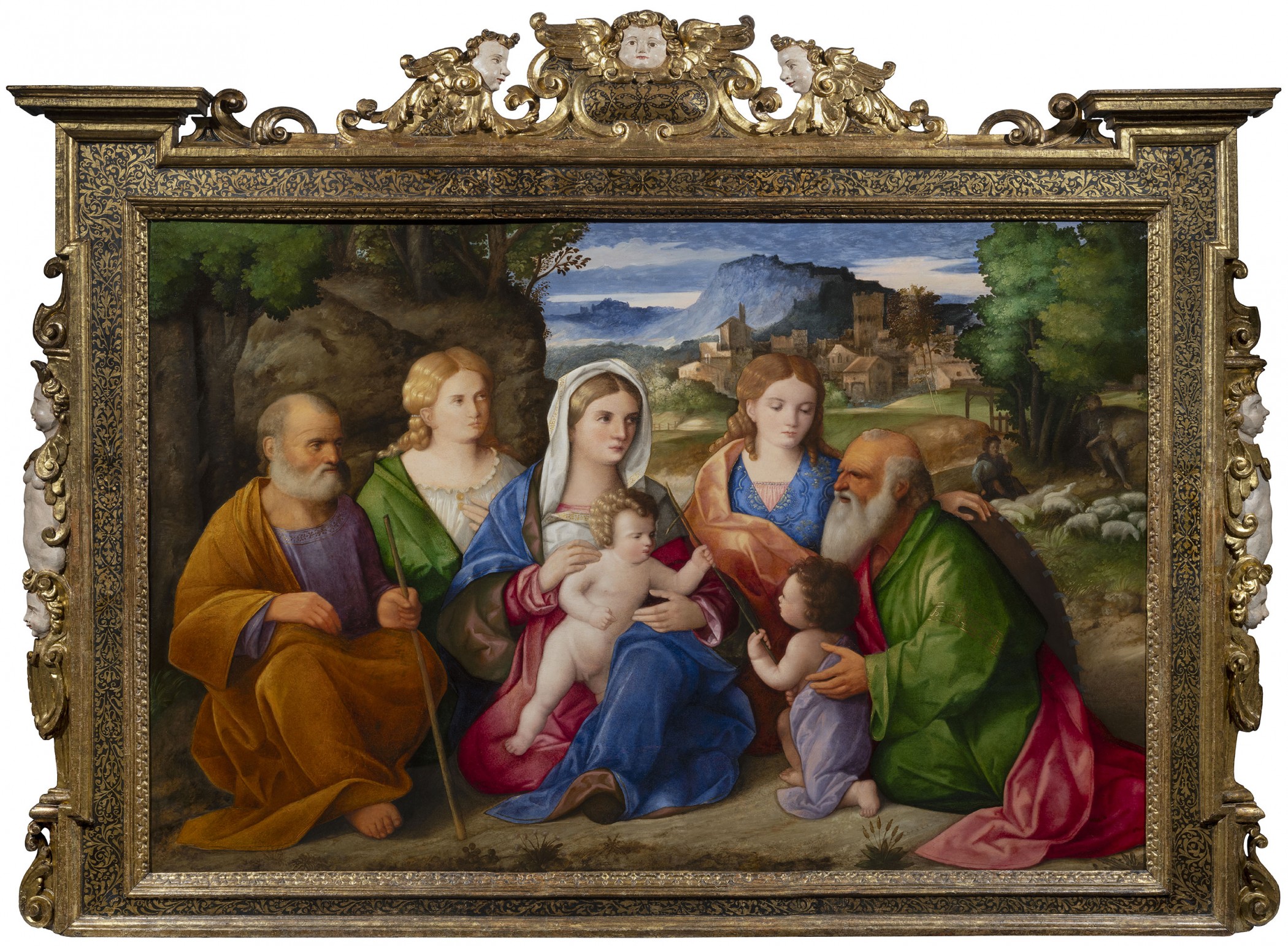Pietro degli Ingannati
(Venice c. 1515 - c. 1550 Venice)
Holy Conversation in a Landscape, c. 1535
oil on panel, 118 x 176 cm (46.46 x 69.29 inches)
Pietro degli Ingannati
(Venice c. 1515 - c. 1550 Venice)
Holy Conversation in a Landscape, c. 1535
oil on panel, 118 x 176 cm (46.46 x 69.29 inches)
Re: 855
Provenance: Soranzo collection, Private collection
G. Gronau, L’ultimo pittore belliniano, in “L’Arte”, XXXVI, 1933, VI, pp. 415-431 (pp. 419, fig. 5, 421-422, nota 3)
B. Berenson, Italian Pictures of the Renaissance. A list of the principal artists and their works with an index of places. Venetian School, London 1957, I, p. 92, fig. 620
F. Heinemann, Giovanni Bellini e i Belliniani, Venice 1962, I, p. 110, n. S. 150 bis
P. Caccialupi, Pietro degli Ingannati, in “Saggi e memorie di storia dell’arte” 11, 1978, pp. 21-43 (pp. 27-28, 35, fig. 15)
F. Heinemann, Giovanni Bellini e i Belliniani, III, Supplemento e ampliamenti, Hildesheim, Zürich, New York 1991, p. 41, n. S. 150 bis, p. 217, fig. 76
G. Tagliaferro, voce Ingannati, Pietro degli, in Dizionario biografico degli italiani, 62, Rome 2004, pp. 355-356 (p. 356)
A. Tempestini, Giovanni Bellini e i pittori belliniani, Florence 2021, p. 186, n. 554a
In front of a landscape enclosed on the left by a rocky outcrop covered in lush vegetation, but which on the opposite side unfolds towards a towered city and the blue mountains on the horizon, the figures of Mary and Child stand out, in the centre of a group that also includes St. Joseph, two young saints in luxurious clothing[1], and on the right Jerome and John the Baptist. The latter in particular holds up the cross to Jesus, a sign of the premonition of death.
As Georg Gronau already said in 1933, the painting certainly represents the apex of the activity known to us by the Venetian painter Pietro degli Ingannati[2]. It is no coincidence that when the panel was auctioned at Christie's[3] in London in December 1931 - a particularly important auction, as paintings from the collection of the Princess Louise were also presented there - it was catalogued as a work by Jacopo Palma the Elder; the same reference, moreover, is derived from an 18th-century inscription on the back of the panel, which also attests to its provenance from the sumptuous collection of the Venetian Soranzo family. Pietro degli Ingannati was nevertheless an artist known to scholars for having interpreted and united in his manner the suggestions that came to him from the Venetian masters immediately preceding him, as well as from his contemporaries.
Too young in all probability to have learned his trade directly at the school of Giovanni Bellini - Gronau called him 'the last Bellinian painter'[4], but the earliest document certifying him as a master is the contribution he made to the "Fraglia dei pittori veneziani" in 1530[5], a sign that Pietro was probably born around 1510 -, the painter initially approached the late interpreters of Giambellino's manner, such as Vincenzo Catena and Francesco Bissolo, during his career. Later on, Pietro converted to the manner of Giorgione and the young Titian - and with regard to our painting, Paola Caccialupi has pointed out the references in the landscape to the Cadore painter's Pastoral Concert [6]- and finally approached Jacopo Palma in the definition of the characters' physiognomies.
It is particularly the female figures here that recall Palma's predecessors, with the saint dressed in a green cloak and her enchanted gaze turned to the right that seems to evoke the features of Jacopo's Judith today in the Uffizi (inv. 1890, no. 939)[7], while the Virgin interprets, perhaps even more sweetly, the almost childlike features of the Madonnas of the master from Bergamo in his frequent Holy Conversations[8]. The date proposed for the work by Paola Caccialupi, around 1527 in a phase of our artist's youth[9], should therefore be advanced by about a decade. In fact, the Sacred Conversation already by Soranzo has the prerogatives of a mature work, the apex of the reflections of one of the protagonists of early 16th century painting in the lagoon, as well as a model for later derivations by Pietro himself or his school (e.g. the beautiful panel in the Melli collection in Florence[10]), but also more coruscating works that can be dated, in any case, within the middle of the century.
The value of this invention is emphasised by the excellent state of conservation of the painted surface, which reveals Pietro's remarkable qualities as a colourist: educated in tonal painting, but also capable of drafting to enhance the iridescent effects of colours. The care with which this true masterpiece has been preserved over the centuries can also be appreciated on the basis of a detail that is by no means secondary: the rich 16th century Venetian frame, embossed on the sides and upper part with heads and busts of winged putti, is the work's original frame - as evidenced by the perfect assembly of the panel inside it, as the restoration report points out -. This is a further sign of the value that has been recognised for the painting throughout the ages and that has been confirmed by the frequent mentions of the work by art historians in the last century.
[1] The two saints were identified by Anchise Tempestini as Barbara and Catherine of Alexandria. However, lacking the usual iconographic attributes and the palms of martyrdom, it was decided not to follow this identification. A. Tempestini, Giovanni Bellini and the Bellini painters, Florence 2021, p. 186, no. 554
[3] Christie, Manson & Woods, Catalogue of ancient and modern pictures, the property of H.R.H. the late Princess Royal, pictures by old masters, the property of Hugh B. Carrington, Esq., early English pictures, the property of Major Henry Howard, old pictures and drawings, the property of Princ Demidoff and from other sources, London, 18 December 1931

